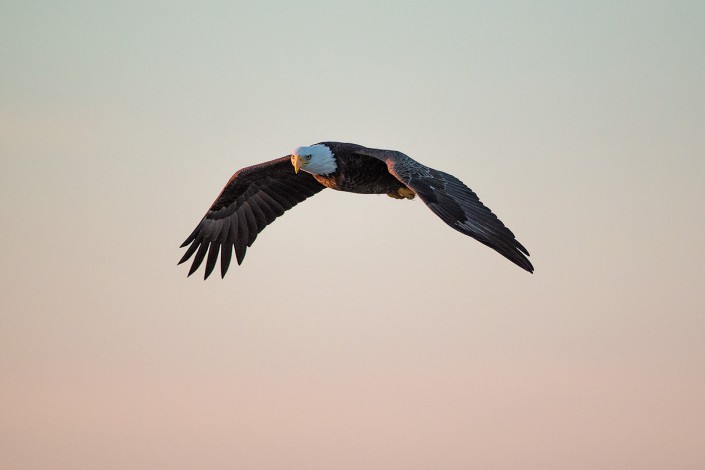Track the Bald Eagle’s Triumphant Return to New Jersey
Updated Story Map Showcases Bald Eagle Nest Locations from 1985-2015
by Brian Henderson, GIS Specialist

Our story map The Return of Bald Eagles in New Jersey has been updated based on the 2015 Bald Eagle Project Report. The story map shows the locations of every eagle nest known to be active (meaning they laid eggs) in New Jersey since 1985 — the year when there was only a single nest in the entire state. The map presents an animated depiction of where eagles have nested each year, so you can track the bald eagle’s triumphant return to the Garden State! Viewing the animation shows you how eagle nests spread from a single point in Cumberland County across all of New Jersey through the years.
The story map also highlights a number of Feature Nests which include more detailed information about the projects underway at specific nests, such as the Duke Farm nest which has been featured on our EagleCam since 2008.
The number of nesting pairs of bald eagles has steadily increased each year. This trend continued in 2015 with a record 150 active pairs, which was a slight increase over 146 such pairs recorded in 2014. In 2015, there were 122 nests that successfully fledged at least one young compared to 115 successful nests in 2014 and the 199 total young fledged in 2015 was only slightly less than the record 201 young fledged in 2014.

Learn More:
- Conserve Wildlife Foundation’s updated story map The Return of Bald Eagles in New Jersey
- 2015 New Jersey Bald Eagle Project Report
- Conserve Wildlife Foundation’s Bald Eagle Project
- Conserve Wildlife Foundation’s online field guide: Bald Eagle
Brian Henderson is the GIS Specialist for Conserve Wildlife Foundation of New Jersey.
Discover more from Conserve Wildlife Foundation of NJ
Subscribe to get the latest posts sent to your email.
Leave a Comment
Dumb question:
As a hiker and canoeist, I’m thrilled by this news.
As a fresh water fisherman, I’m concerned about the impact on fish population.
Has there been on studies regarding this? I have to imagine a pair of eagles taking up residence near a small lake could do some harm.
Thanks!
The Eagle is a Keystone species. It will weed out the old, weak, and sick (natural selection). By doing so it will strengthen the gene pool of all the animals it preys upon. Making each species healthier. All keystone species help to keep natures natural balance. In my personal opinion the amount of fish the Eagles will eat will have no real impact on fish populations.
Excellent response by Ryan. Jim, there is no reason to be concerned with eagles depleting the number of fish in a small lake. They are opportunists and will eat whatever meal is easiest for them to catch with using the least amount of energy.
What would be more harmful to fish would be runoff from neighboring housing developments where the use of pesticides and herbicides (applied to lawns) could cause an algae bloom which would wipe out the dissolved oxygen in the water (killing all the fish).
Thank you gentlemen.
Although, I was hoping to use the increasing bald eagle population as an excuse for my bad fishing days!
Thanks again – Take care.
Comments are closed.